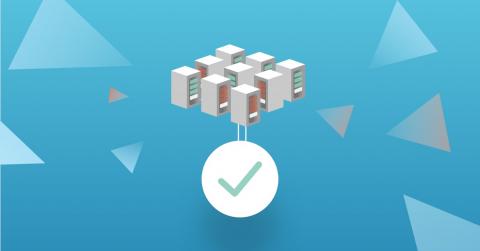Operations | Monitoring | ITSM | DevOps | Cloud
DevOps
The latest News and Information on DevOps, CI/CD, Automation and related technologies.
Serverless Summer School (SSS) Week Three: Building the Wild Rydes Back-End
Reduce Toil and Maintain Security With Zenoss Cloud APIs
Software Engineers: Confidence Matters Just as Much as Ability
Software engineering is a skilled task; those who obtain the experience and credentials necessary to become engineers know this, as do their employers. Engineers have an overarching goal of using these skills to construct experiences that enable end-users to complete a task successfully and they hope to provide enjoyment and comfort along the way. Anyone who has written software used by a decent number of people knows how daunting this task is.
K3S streamlines deployment of global edge applications
Watching the Chaos: Monitoring and Chaos Engineering
The online world is full of contrasts. On the one hand, you have site reliability engineers whose job is to keep the business running by ensuring an app’s smooth operations. On the other hand, you have the DevOps staff, whose goal is to minimize cycle time—the time from business idea to feature in production. These two teams can have conflicting objectives.
Stackery Professional Serverless Tooling Now Available on the AWS Marketplace
Stackery is now available on the Amazon Web Services (AWS) Marketplace! This is great news for development teams excited by the prospect of building and modernizing applications using AWS Lambda, DynamoDB, Kinesis, API Gateway, Fargate, and the rest of the growing menu of serverless capabilities. AWS teams can start their serverless journeys with prescriptive and flexible tooling that extends AWS tools and services with less friction in the purchasing process.
Monitoring AWS Lambda with Blue Matador
AWS Lambda is one of AWS’s most popular cloud services. It allows serverless applications to be built by dividing up an application into functions that can be triggered by changes in your system. Since they are critical to the health of your application, properly monitoring Lambda functions is a top priority for most teams. In this blog post, we will go over how Blue Matador monitors Lambda functions automatically and without configuration. We will cover the following topics:
RESOLVE for Network - Cisco IOS-XE Device Upgrades
Monitor Harbor container registry with Datadog
Harbor, developed by VMware and hosted by the CNCF, is an open source registry for container images and Helm charts. Hosting Harbor within your infrastructure gives you a number of advantages over using the default Docker registry, such as role-based access control, security scanning, and replication of resources between registry instances. Since a failed Harbor deployment can spell trouble for your containerized workloads, monitoring your self-hosted container registry is critical.











